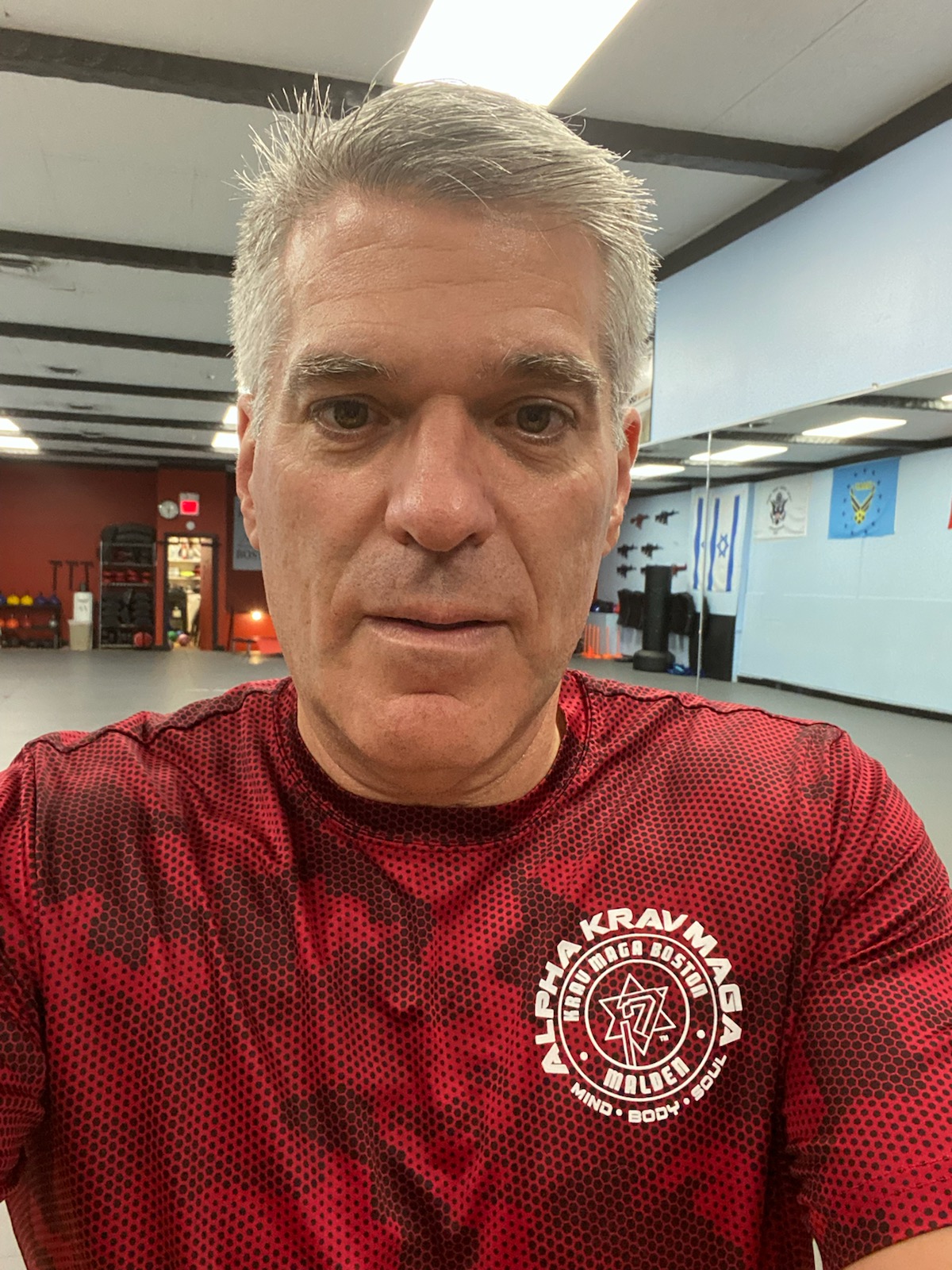Almost a year ago I decided to enroll in Krav Maga training. I was looking for the missing piece of my personal care regimen and thought that in my mid-fifties, finally trying some sort of martial arts training was something that I should do—and quickly before I reached an event horizon where this sort of intense training was no longer viable. So, I do what I always do: I researched different martial arts schools and disciplines to find the one that offered the training I was interested in.
Through research, I learned that Krav Maga was initially developed by one person, Imi Lichtenfeld, to protect Jewish communities from violent street crime at the hand of fascists in the 1930s. Jews successfully street fighting Nazis piqued my interest because I am a WWII history buff. And, the idea that one person simply refused to become a victim of organized aggression gave me a warm feeling deep in my soul. So, I decided to try it out. I went to one class and was hooked.
My basic wiring and personal philosophy turns out to be a natural fit for Krav Maga. I intend to be a lifelong practitioner. But I did not expect that practicing this discipline would help me to be an even more effective lawyer. However, it has had exactly that effect. What a valuable by-product!
Krav Maga is loosely translated from Hebrew to English as “contact combat.” It is not a sport. There is no competition in the discipline. Krav Maga is a self-defense discipline that first teaches a person to avoid a confrontation. This is where I usually start my cases. Can the parties amicably negotiate a solution to their contest?
If a confrontation cannot be avoided, then the discipline teaches us to first address the immediate threat, then to counterattack and continue to counterattack, until the attacker no longer poses any threat, then disengage. Now, I don’t think that I ever thought about how I practice as a family law litigator in exactly those terms; yet, the principles of Krav Maga and my natural approach to legal problems are very closely aligned, as it turns out. Small wonder I found the principles of Krav Maga so appealing. But practice of a discipline is not as straightforward as just following its principles. In real-time, things can get a little messy. A related quote that comes to mind, by an anonymous Navy Seal, who is reputed to have once said, “We don’t rise to the occasion; under stress we sink to the level of proficiency.” So, the more we train, the better we tend to perform under stress.
It’s interesting to me to think that in the context of essentially practicing a form of combat training, the US litigation system is an adversarial system and that stress training my mind and body carries forward to my proficiency in litigation practice. Through the adversarial process of discovery and trial (think: cross-examination), the system seeks to determine the truth—or as near as one can get to the truth. So, we practice law, and we prepare for trials and contests.
Similarly, Krav Maga trains for addressing adversity. It teaches that when confronted by an adversary, one does not (or should not) respond in anger. Instead, one should:
- assess the threat
- address the threat
- neutralize the threat, and
- disengage through a series of techniques best suited to the situation at hand.
Similarly, that’s my approach to how I practice law.
To be sure, now and again a technique that was thought to be right in the moment may not have been the best maneuver in retrospect. Like self-defense, practicing law is an art, not a science. No matter what, constant, forward movement and keeping the momentum going to reach your goal is what Krav Maga teaches and that is how I have endeavored to practice law for the past 27 years.
All too often I see litigants and lawyers who appear to have made little to no assessment as to what is of paramount importance in a case (this is akin to threat assessment) and how best to achieve prevailing on those issues (going after what you think is best by a series of thoughtful actions). Instead, some just throw punches. There is no art or discipline in naked aggression unleashed for the sake of a fight. Naked aggression wastes resources and very often gets the aggressor into serious trouble when confronted with an opponent who has trained themselves in the application of well-disciplined counteroffensives.
I didn’t really know what to expect when I ventured to try out Krav Maga. Reflecting on almost a year of training, I constantly marvel at the parallels that I find between the principles of Krav Maga and best litigation practice.
Overall, I believe that Krav Maga makes for a better lawyer. It has certainly sharpened my litigation abilities for the benefit of my clients.
If you would like to know more about the history of Krav Maga, here is a link to Wikipedia about the practice and its history.
https://en.wikipedia.org/wiki/Krav_Maga
If you would like to try it out, here is a link to where I train.
If you ever do try it out at my gym, please look for me and I will spar with you.
Kida










